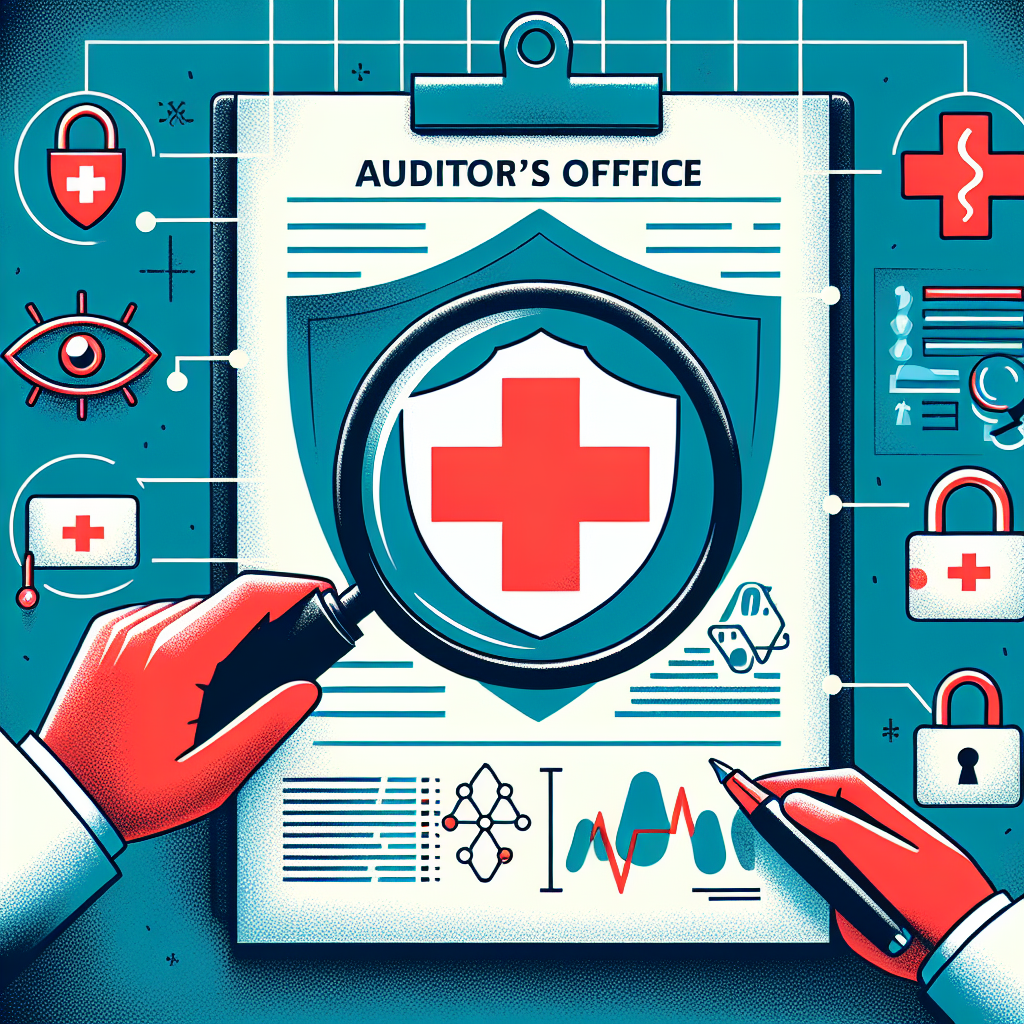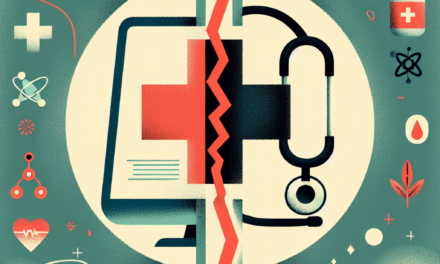GAO Report Highlights HHS Struggles in Leading Healthcare Cybersecurity Efforts

In an era where digital transformation is reshaping industries, the healthcare sector stands at a critical juncture. The integration of technology into healthcare systems has brought about significant advancements, but it has also introduced new vulnerabilities. The Government Accountability Office (GAO) recently released a report highlighting the challenges faced by the Department of Health and Human Services (HHS) in leading cybersecurity efforts within the healthcare sector. This article delves into the key findings of the GAO report, exploring the implications for healthcare cybersecurity and offering insights into potential solutions.
The Current State of Healthcare Cybersecurity
The healthcare industry has become a prime target for cyberattacks due to the sensitive nature of the data it handles. Patient records, financial information, and proprietary research are all valuable assets that attract cybercriminals. The GAO report underscores the urgency of addressing cybersecurity vulnerabilities in healthcare, as the consequences of a breach can be devastating.
According to the report, healthcare organizations have experienced a significant increase in cyberattacks over the past decade. The rise of ransomware attacks, in particular, has been alarming. In 2020 alone, the healthcare sector accounted for 79% of all reported ransomware incidents, with attackers demanding exorbitant ransoms to restore access to critical systems.
The GAO report highlights several factors contributing to the vulnerability of healthcare systems:
- Legacy Systems: Many healthcare organizations continue to rely on outdated technology that lacks modern security features, making them easy targets for cybercriminals.
- Complex Networks: The interconnected nature of healthcare systems, including electronic health records (EHRs) and medical devices, creates a complex web of potential entry points for attackers.
- Resource Constraints: Limited budgets and staffing shortages often result in inadequate cybersecurity measures, leaving organizations ill-prepared to defend against sophisticated threats.
These challenges underscore the need for a coordinated and comprehensive approach to healthcare cybersecurity, with HHS playing a pivotal role in leading these efforts.
HHS’s Role in Healthcare Cybersecurity
The Department of Health and Human Services (HHS) is tasked with safeguarding the nation’s health and well-being, which includes ensuring the security of healthcare information systems. However, the GAO report reveals that HHS has struggled to effectively lead cybersecurity efforts in the healthcare sector.
One of the primary challenges faced by HHS is the lack of a centralized cybersecurity strategy. The report notes that HHS has not developed a comprehensive plan to address the unique cybersecurity needs of the healthcare industry. This has resulted in fragmented efforts and a lack of coordination among various stakeholders.
Furthermore, the GAO report highlights the need for improved communication and collaboration between HHS and other federal agencies, as well as with private sector partners. The healthcare sector is a complex ecosystem, and effective cybersecurity requires a collaborative approach that leverages the expertise and resources of all stakeholders.
To address these challenges, the GAO report recommends several actions for HHS:
- Develop a Comprehensive Cybersecurity Strategy: HHS should create a unified strategy that outlines clear goals, objectives, and responsibilities for all stakeholders involved in healthcare cybersecurity.
- Enhance Collaboration: HHS should foster stronger partnerships with federal agencies, industry groups, and healthcare organizations to share information and best practices.
- Improve Incident Response: HHS should establish a robust incident response framework to quickly detect, respond to, and recover from cyber incidents.
By implementing these recommendations, HHS can strengthen its leadership role in healthcare cybersecurity and better protect the nation’s healthcare infrastructure.
Case Studies: Cybersecurity Breaches in Healthcare
To understand the real-world impact of cybersecurity challenges in healthcare, it is essential to examine specific case studies of breaches that have occurred in recent years. These incidents highlight the vulnerabilities within the sector and underscore the need for improved cybersecurity measures.
One notable case is the 2017 WannaCry ransomware attack, which affected healthcare organizations worldwide. The attack exploited a vulnerability in Microsoft Windows operating systems, encrypting data and demanding ransom payments in Bitcoin. The National Health Service (NHS) in the United Kingdom was particularly hard hit, with hospitals and clinics forced to cancel appointments and divert emergency patients. The attack exposed the risks associated with outdated software and the need for timely security updates.
Another significant breach occurred in 2019 when a cyberattack on American Medical Collection Agency (AMCA) compromised the personal and financial information of over 20 million patients. The breach affected several major healthcare providers, including Quest Diagnostics and LabCorp. The incident highlighted the risks associated with third-party vendors and the importance of conducting thorough security assessments of business partners.
These case studies illustrate the far-reaching consequences of cybersecurity breaches in healthcare, including:
- Disruption of Services: Cyberattacks can lead to the shutdown of critical healthcare services, jeopardizing patient care and safety.
- Financial Losses: Healthcare organizations face significant financial losses due to ransom payments, legal fees, and reputational damage.
- Data Privacy Concerns: Breaches compromise patient privacy and can result in identity theft and fraud.
These incidents serve as a stark reminder of the importance of robust cybersecurity measures and the need for HHS to take a proactive role in addressing these challenges.
Strategies for Enhancing Healthcare Cybersecurity
Given the increasing frequency and sophistication of cyberattacks, healthcare organizations must adopt comprehensive strategies to enhance their cybersecurity posture. The GAO report provides valuable insights into potential solutions that can help mitigate risks and protect sensitive data.
One key strategy is the implementation of a risk-based approach to cybersecurity. This involves identifying and prioritizing the most critical assets and vulnerabilities within an organization and allocating resources accordingly. By focusing on high-risk areas, healthcare organizations can better protect their most valuable data and systems.
Another important strategy is the adoption of advanced technologies such as artificial intelligence (AI) and machine learning (ML). These technologies can help detect and respond to cyber threats in real-time, providing organizations with a proactive defense against attacks. For example, AI-powered security systems can analyze network traffic patterns to identify anomalies and potential threats before they cause harm.
In addition to technological solutions, healthcare organizations must also prioritize employee training and awareness. Human error remains one of the leading causes of cybersecurity breaches, and educating staff on best practices can significantly reduce the risk of incidents. Regular training sessions and simulated phishing exercises can help employees recognize and respond to potential threats.
Finally, healthcare organizations should establish strong partnerships with industry groups and government agencies to share information and collaborate on cybersecurity initiatives. By working together, stakeholders can develop a unified approach to addressing cybersecurity challenges and protecting the healthcare sector as a whole.
The Path Forward: Recommendations for HHS
The GAO report provides a roadmap for HHS to enhance its leadership role in healthcare cybersecurity. By implementing the report’s recommendations, HHS can help create a more secure and resilient healthcare infrastructure.
One of the key recommendations is for HHS to establish a dedicated cybersecurity office within the department. This office would be responsible for coordinating cybersecurity efforts across the healthcare sector and ensuring that all stakeholders are aligned in their approach to addressing threats.
Additionally, HHS should work to improve its communication and collaboration with other federal agencies, such as the Department of Homeland Security (DHS) and the Federal Bureau of Investigation (FBI). By sharing information and resources, these agencies can work together to identify and respond to emerging threats more effectively.
The GAO report also emphasizes the importance of developing a comprehensive cybersecurity framework for the healthcare sector. This framework should include clear guidelines and best practices for healthcare organizations to follow, as well as mechanisms for monitoring and enforcing compliance.
Finally, HHS should prioritize funding and resources for cybersecurity initiatives. This includes providing financial support for healthcare organizations to upgrade their technology and implement advanced security measures. By investing in cybersecurity, HHS can help protect the nation’s healthcare infrastructure and ensure the safety and privacy of patient data.
Conclusion
The GAO report highlights the significant challenges faced by HHS in leading healthcare cybersecurity efforts. As cyber threats continue to evolve, it is imperative for HHS to take a proactive role in addressing these challenges and protecting the nation’s healthcare infrastructure. By implementing the report’s recommendations and fostering collaboration among stakeholders, HHS can help create a more secure and resilient healthcare sector. The path forward requires a comprehensive and coordinated approach, with a focus on risk-based strategies, advanced technologies, and strong partnerships. By prioritizing cybersecurity, HHS can ensure the safety and privacy of patient data and safeguard the future of healthcare.





